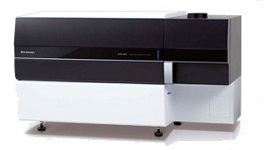Simultaneous Analysis of Major and Trace Elements in Plating Solution by ICPE-9820
Introduction
Plating is a technique in which a thin film of metal is coated on the surface of a material to enhance the performance of a product. Management of the components in the plating solution is very important from the standpoint of maintaining the quality of the plating. Aside from the main components in the plating solution, management of the trace components and additives, typically present at different concentrations, is also important.
Efficient analysis of these metallic components requires an analytical instrument capable of both high-sensitivity measurement and measurement over a wide concentration range. ICP atomic emission spectrometry is a method of analysis that is suitable for such analyses due to its wide dynamic range, permitting analysis over a wide range of concentrations, from μg/L to the percentage level.
We performed simultaneous elemental analysis of the zinc plating solution, from the principle to trace level elements, using the Shimadzu ICPE-9820 multi-type ICP atomic emission spectrometer. Typically, when analyzing metals in plating solution, the principle elements are measured after diluting the sample between 1,000 and 10,000 times, whereas the trace level elements are measured in a low-dilution sample. As a result, many samples must be prepared at different dilutions, significantly lengthening the analysis time. With the ICPE-9820, however, the vertically-oriented torch – which prevents salt precipitation – coupled with automatic dual-view (axial and radial) observation, makes it possible to conduct simultaneous analysis of both high- and low-concentration elements.
Sample Preparation

The measurement samples were prepared by diluting each sample 10-fold using 1 mol/L hydrochloric acid. The calibration curve samples were prepared by appropriately diluting each of the single-element standard solutions (1000 mg/L) with 1 mol/L hydrochloric acid. To validate the measurements of the high-concentration elements, Sample 1 was diluted 100-fold and 1,000- fold, respectively, to prepare diluted test samples. For the trace elements, Sample 1 was diluted 10-fold with hydrochloric acid, and then spiked with a standard
solution of the measurement elements to prepare a spike-and-recovery test solution.
Analysis
The calibration curve-internal standard method was used to measure zinc (Zn), calcium (Ca), iron (Fe), manganese (Mn), titanium (Ti), aluminum (Al), cadmium (Cd) and copper (Cu) elements in the plating solution, with an internal standard used to correct for interferences. The dilution test was conducted for the highconcentration elements, Zn, Ca, Fe, Mn and Ti, and the spike-and-recovery test was conducted for the lowconcentration elements, Al, Cd and Cu.
Results
Table 1 shows both the dilution and the spike-andrecovery test results. Table 2 shows the analysis results. Both the dilution test and spike-and-recovery test showed excellent results, with nearly 100 % recovery. Good results were obtained for the main constituent Zn using the low-sensitivity wavelength, radial-view measurement, and a 21 g/L upper limit calibration curve, and high-accuracy results were obtained for the trace elements using the axial-view measurement. Fig. 1 shows the calibration curve for Zn, and the spectral profiles of Zn.

Dilution test result (%) = {10-fold diluted sample analysis result / (100-fold or 1,000-fold diluted sample quantitation value × dilution factor / 10)} × 100
Spike-and-recovery rate (%) = {(sample analysis results for spike-and-recovery test – 10-fold dilution sample analysis results) / spike concentration} × 100


Conclusion
Using the ICPE-9820, it is possible to conduct simultaneous analysis of all the elements in a zinc plating solution, from the principle components to the trace-level elements, using just a single dilution operation. These results demonstrate that reduced pretreatment time, shortened analysis time and lower running costs can be achieved with the ICPE-9820 instrument.
ICPE-9800 Series Simultaneous ICP Atomic Emission Spectrometers

ICPE-9800 Series of simultaneous ICP atomic emission spectrometers are next-generation systems that offer the superior accuracy necessary to simultaneously and quickly analyze multiple elements regardless of their concentration levels. They also feature user-friendly software that makes analysis easy. Furthermore, the systems reduce analysis costs while providing the highest performance levels in the industry. ICPE-9800 Series systems represent the ultimate in ICP atomic emission spectrometry for environmental, pharmaceutical, food, chemical, metal, and other fields.


